Raster Data Model
A simple, storage intensive format best suited for continuous fields.
Raster Data Model
Represents space continuously:
- Rectangular grid of equally sized cells
- Each cell only has one value
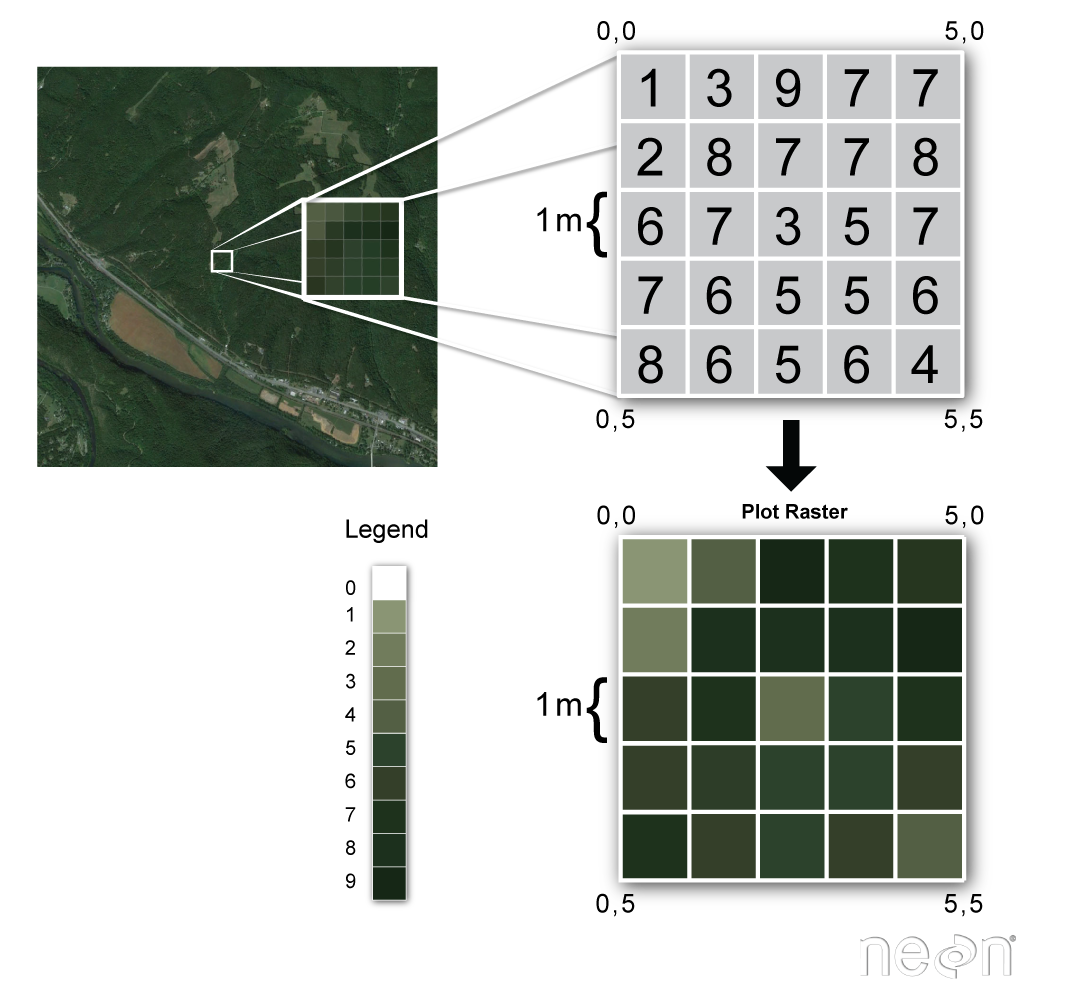
Raster Data Model
Multiple attributes, require multiple bands
- Standard color photos have three bands:
- Red, green, & blue
- LANDSAT8 has 11 bands:
- “False Color Images”
- Spectral Indices (NDVI)
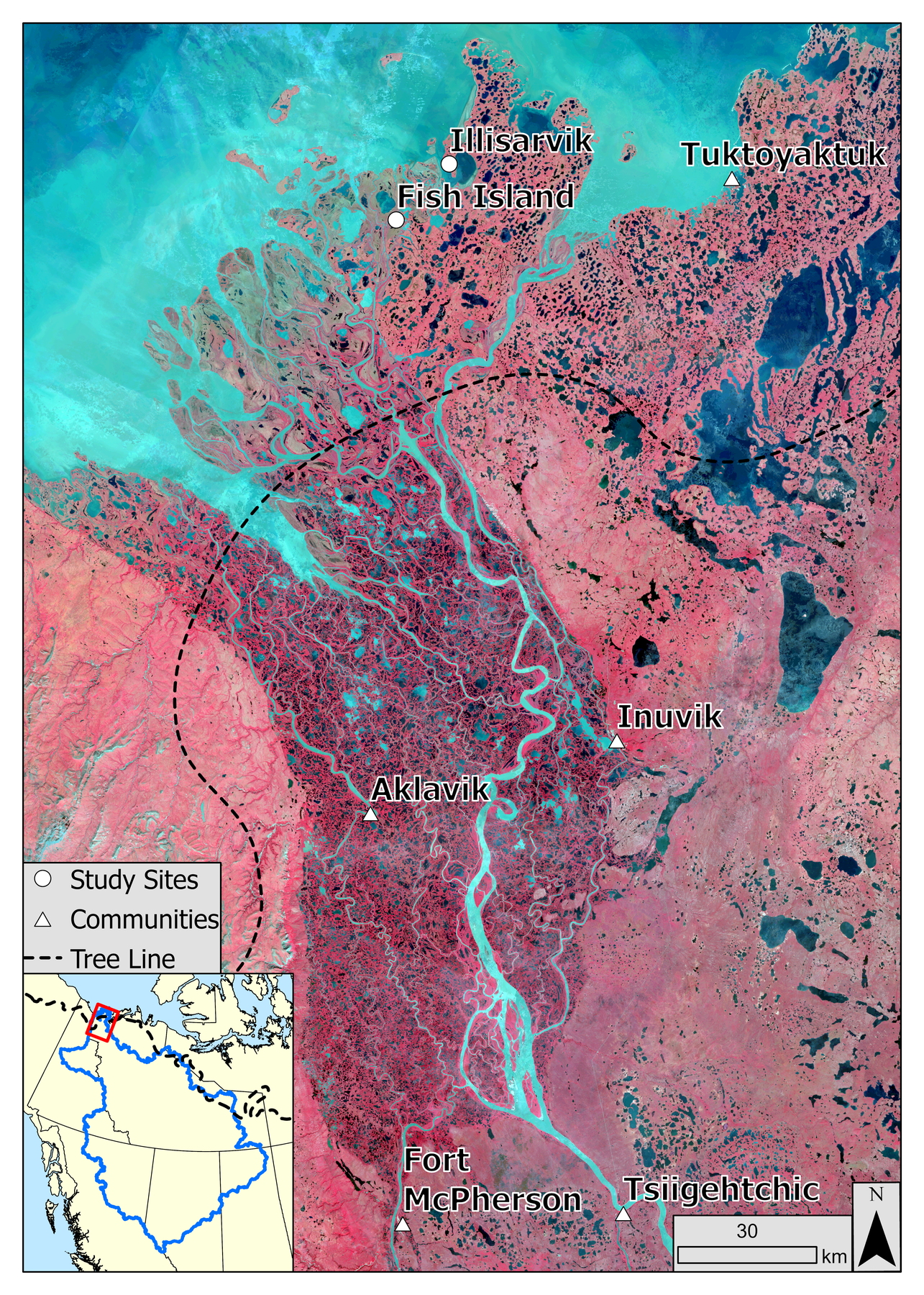
Resolution vs. Extent
Resolution (aka cell size) is the smallest resolvable feature. Extent (aka domain) depends on number of rows and columns along with the cell size.
1 m cell size
5 rows x 5 columns = 25 cells
Covers 5 m x 5 m = 25 m2

Resolution vs. Extent
Resolution: 10 m cell size = 100 m2 area per cell.
Extent: varies with number of cells and cell size.
| Rows | Columns | Extent |
|---|---|---|
| 5 | 5 | 50 m x 50 m = 2,500 m2 |
| 5 | 10 | 50 m x 100 m = 5,000 m2 |
| 100 | 100 | 1,000 m x 1,000 m = 1,000,000 m2 |
TopHat Question 1
Raster resolution is dictated by the number of rows and columns, raster extent is dictated by the cell size.
- True
- False
- Sometimes True, Sometimes False
Mixed Pixel Problem
One cell = one value. What if it covers multiple values?
A: Winner take all
B: Cell center
Other options?
- Containment: value of interest is present
- e.g. invasive species presence
![]()
Implications
Loss of information during rasterization.
- “Bigger” issue for larger cells
- At some point features become unrecognizable
- Higher resolution = larger file
- For equivalent areas

TopHat Question 2
This term describes how information is lost when creating a raster image.
- Resolution
- Domain
- Mixed pixel problem
- Rasterization
File Size
The number of cells per image dictates file size.
- # cells = rows x columns x bands
- Increases exponentially with resolution
- For a given extent
- Increases linearly with number of bands
- Increases exponentially with resolution
File Size
Imagine four images that all have the same extent:
- 1000 m x 1000 m = 1,000,000 m2
| Bands | Cell Size | Rows | Columns | # of Cells |
|---|---|---|---|---|
| 1 | 100m | 10 | 10 | 100 |
| 1 | 1m | 1000 | 1000 | 1,000,000 |
| 3 | 100m | 10 | 10 | 300 |
| 3 | 1m | 1000 | 1000 | 3,000,000 |
Why does this matter?
Downloading, uploading, and processing times will all increase as the file size increases.
- Large raster datasets are computationally “expensive”
- More cells = more “overhead”
- Practically speaking, how will this impact you?
TopHat Question 3
You downloaded a 3 band LANDSAT8 image covering the UBC campus. The image’s dimensions are 6000m north/south (rows are vertical) by 4500m east/west (columns are horizontal) and the resolution (aka cell size) is 30m. How many cells does the image contain?
- 30,000
- 90,000
- 900,000
- 2,700,000
- 27,000,000
- 81,000,000
Solution
You downloaded a 3 band LANDSAT8 image covering the UBC campus. The image’s dimensions are 6000m north/south (rows are vertical) by 4500m east/west (columns are horizontal) and the resolution (aka cell size) is 30m. How many cells does the image contain?
\(6000 \div 30 = 200\) rows
\(4500 \div 30 = 150\) columns
\(200 \times 150 = 30,000\) cells (per band)
\(30,000 \times 3 = 90,000\) cells in total
Metadata in ArcPro
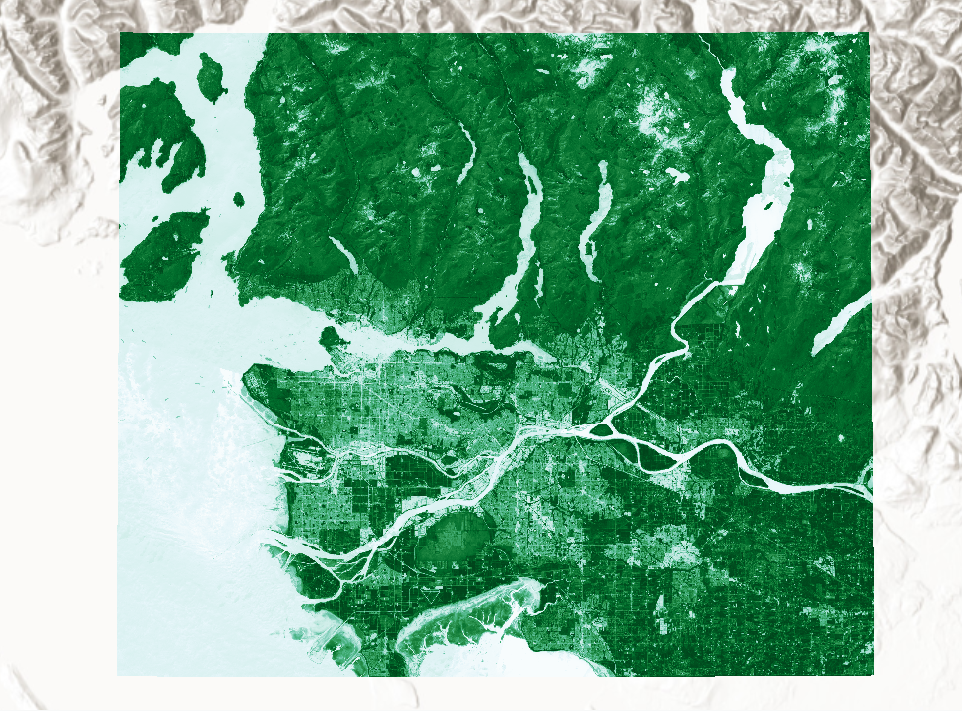
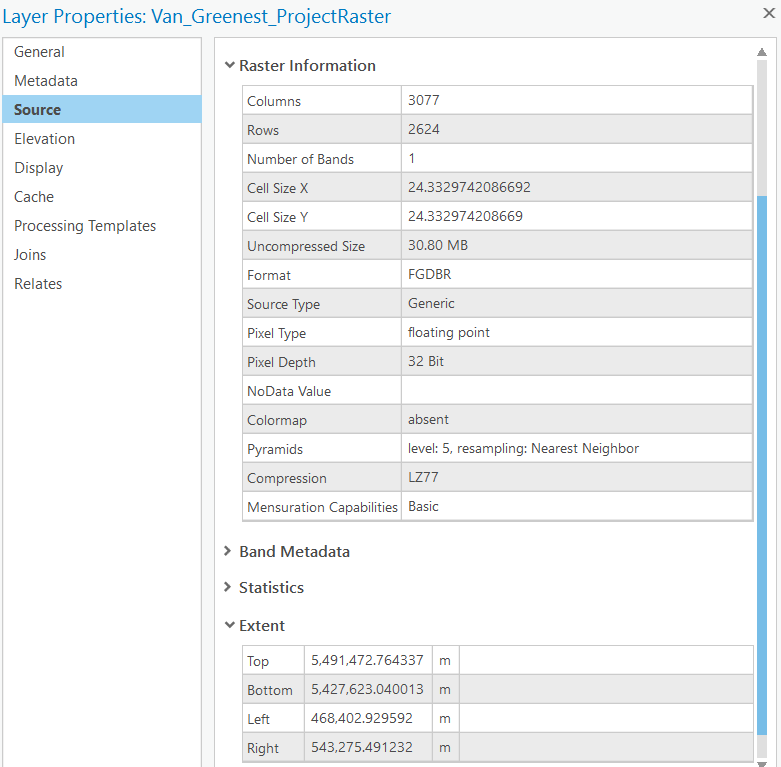
Raster Overlay
Raster data can be used to evaluate algebraic expressions easily and efficiently.
- A: Winter Temperature
- B: Summer Temperature
- Range: B-A
- Average: (A+B)/2
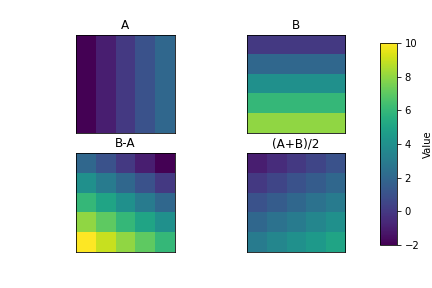
Raster Calculator
- Perform simple calculations incorporating one or multiple layers
- Ideally, layers should have the same resolution and extent
- Output will be restricted to “smallest” extent

Raster Calculator
- Perform simple calculations incorporating one or multiple layers
- Ideally, layers should have the same resolution and extent
- Output will be restricted to “smallest” extent
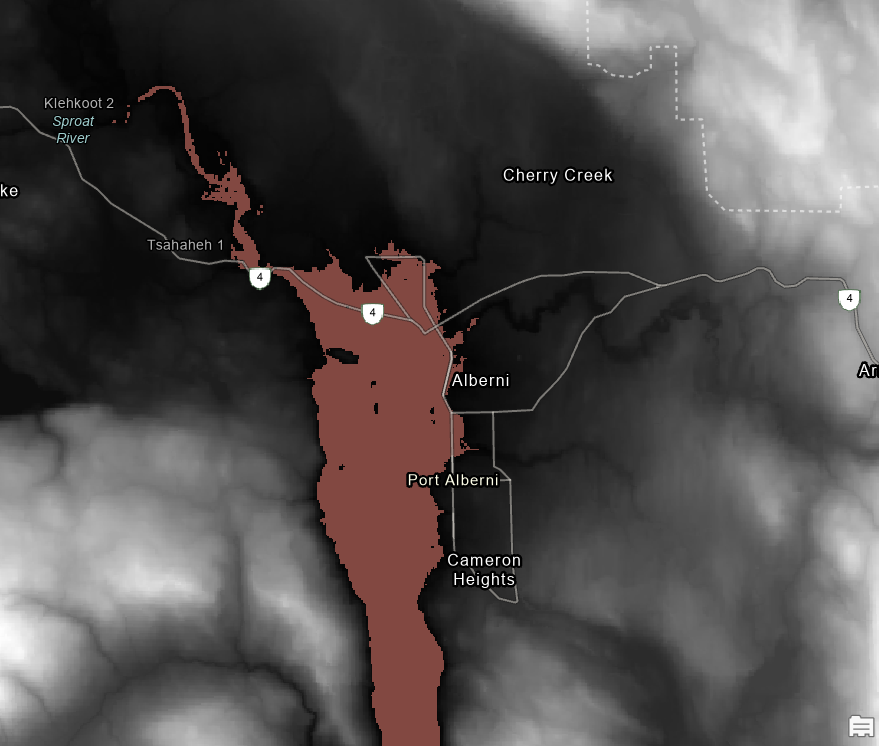
Raster Calculator
- Perform simple calculations incorporating one or multiple layers
- Ideally, layers should have the same resolution and extent
- Output will be restricted to “smallest” extent

Raster Calculator
- Perform simple calculations incorporating one or multiple layers
- Ideally, layers should have the same resolution and extent
- Output will be restricted to “smallest” extent

Key Advantages
Raster model is well suited for continuous phenomena:
- Continuous in space and time
- Complete coverage within the domain
- Bands can be stacked to represent multiple attributes or time steps
- Simple data structure overlay easy and efficient
- Relation between layers can evaluated with expressions
- Easy to “show” others what has been done
- Relation between layers can evaluated with expressions
GeoTIFF
One of the most common/functional raster formats, based of the Tag Image File Format (TIFF).
- A TIFF file stores metadata (data about the data) as tags.
- GeoTIFF adds spatial tags denoting:
- Extent (minimum x,y and maximum x,y)
- Resolution (cell size)
- Projection, Coordinate system, and datum
- GeoTIFF adds spatial tags denoting:
Other file types
Raster data can come in many different formats. You will likely encounter when working with raster data include:
- IMG: Proprietary format used by ESRI products
- JPEG2000: Geospatial version of the .jpg image
- ASCII: Human readable format (text file)
- Slower performance than the types listed above
TopHat Question 4
The Raster Calculator tool lets you:
- Evaluate algebraic expressions using raster layers as inputs
- Create raster layers
- Calculate the area of raster layers
- Overlay raster and vector layers
Satellites Data
We’re going to work with LANDSAT8 data in lab.
- LANDSAT8 is one of a large number of satellites that orbit the earth continuously collecting multi-spectral (visible light & other wavelengths) imagery.
- We can use multi-spectral imagery for a number of different applications like estimating vegetation health.
Monitoring Vegetation
The lines on the chart below are referred to as a spectral reflectance curves.
\(NDVI = \frac{(NIR-Red)}{(NIR+Red)}\)
- Green vegetation has different reflectance than soil and water

TopHat Question 5
What does NDVI tell us?
- Vegetation Height
- Vegetation Health/Density
- Vegetation Species
- Number of Plants per Square Meter
- Location and Age of Forests